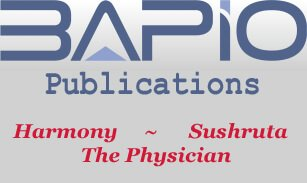case report
Enough to Make You Blush: A Case of REM Sleep-Related Painful Erections Presenting with Flushing
Jessica Megan Triay
Specialist Registrar in Endocrinology, Bristol Royal Infirmary, Marlborough Street, Bristol, BS1 3NU
Parag Singhal, Consultant in Endocrinology, Weston General Hospital, Grange Road, Uphill, Weston-super-Mare
cite as:
Triay JM, Singhal P. Enough to Make You Blush: A Case of REM Sleep-Related Painful Erections Presenting with Flushing. The Physician
2012 1(1) 62-63
Introduction
The syndrome of Sleep-Related Painful Erections is recognised to cause significant distress, affect relationships, and lead to excessive daytime somnolence due to poor sleep quality. Polysomnography is the cornerstone of diagnosis. Treatment, although difficult, can greatly improve wellbeing. Due to the sensitive nature of symptoms, it is underreported by patients, who can present to a variety of different specialities, however, the condition is frequently under-recognised by clinicians.
Case History
A 70-year-old man sought a diagnosis to explain troublesome symptoms of flushing within the endocrine service. Six months earlier he had become troubled by nocturnal waking associated with erythema, the intense sensation of heat originating around the genitalia and forceful, painful erections. These events took up to 20 minutes to settle and he often experienced up to four discrete episodes every night, leading to considerable sleep loss and genital soreness. Problems never occurred during the day, when erectile function was normal. On questioning, he recognised the development of symptoms over a seven-month
period, initially with waking due to painless erections and then the later development of the uncomfortable symptoms. He never experienced respiratory distress, wheeze or bowel disturbance, and his weight was stable. Symptom severity and frequency had remained constant over several months, and although distressing, there were no psychological concerns. Simvastatin 40mg, Bisoprolol 1.25mg and Aspirin 75mg had been commenced after earlier investigation identified a mitral valve prolapse with regurgitation and coronary artery disease. Bedside examination was consistent with mitral valve regurgitation but was otherwise normal, and no penile abnormalities were detected.
He was admitted for observation and investigation and remained asymptomatic during the day. During the night, however, he was assessed following flushing, painful priapism and palpitations. His hands, feet and groin were flushed, although physical examination and electrocardiogram were unchanged. The problems settled completely over 20 minutes. Investigations showed an initially marginally elevated urinary noradrenaline (675nmol/24hrs) that normalised on two subsequent tests despite persistent symptoms. Notably, gonadotrophins and testosterone were normal (LH 4.1 IU/L, FSH 11.4 IU/L, testosterone 10.4 nmol/L), as was urinary 5-HIAA (1.6 mmol/mol Crt). The rest of his urine and blood testing were unremarkable. Cardiac autonomic studies showed some evidence of cardiovascular functional neuropathy, with absent rebound tachycardia on Valsalva manoeuvre and fall in blood pressure on standing (140/70mmHg to 125/75mmHg). It was felt that this may have been a function of age 1 or the low dose of Bisoprolol. A 24-hour electrocardiogram was normal, and computed tomography scan of the chest and abdomen revealed only gallstones.
Polysomnography (sleep studies) showed marked fragmentation during rapid eye movement (REM) sleep, with frequent arousals from REM when the patient reported sensations of heat in the genital area. Sleep efficiency and other aspects of the polysomnography were within normal limits of his age. Recordings of penile tumescence, a marker of penile swelling, were not undertaken, however the polysomnography features were consistent with a diagnosis of REM Sleep-Related Painful Erections. This is also known as Nocturnal Penile Tumescence.
The gentleman received counselling and coping strategies for his symptoms, and commenced Clonazepam 500 micrograms for four nights weekly to help reduce the frequency of the episodes and help with improved sleep quality. Clonazepam can be further titrated to a maximum of 1.5mg on four nights weekly and using the step-wise approach helps to ascertain the lowest required dose, while intermittent use reduces the possibility of drug tolerance evolving. He has since been discharged from follow-up with improved control of his symptoms.
Discussion
This case highlights the importance of wider awareness of a condition which is likely to be under-reported and under-recognised 2. Sleep-Related
Painful Erections were first reported in 1971 3, followed by a handful of case reports and small case series that form the basis of our clinical knowledge
2, 4, 5. It is defined by the International Classification of Sleep Disorders 6 as a Rapid Eye Movement (REM) sleep parasomnia with painful erections. Before the diagnosis is made, it is important to exclude psychological disturbances, such as depression, or penile abnormalities that can cause erectile pain, including Peyronie’s disease and phimosis. The majority of those affected are men over the age of 40 years, and symptoms typically progress gradually. No predisposing factors have been identified and there is no reported female equivalent of the disease. Men continue to have normal, painless erections in the awake-state and generally have normal sexual function. Polysomnography is recommended for diagnosis and shows patterns of awakening during sleep-related penile tumescence, a measure of penile vascular engorgement, attributed to pain. The true cause of the condition is unclear. REM sleep is the commonest period for normal sleep-related erections 7, and therefore does not provide a clue to the aetiology of the condition. There is mounting evidence for the presence of autonomic nervous system involvement, although identifying whether reduced vagal response or increased beta-adrenergic activity is the culprit behind the erectile dysfunction is unclear. In a case series by Ferini-Strambi et al. 8 , REM sleep in men with the condition was associated with a reduction in resting heart rate, suggesting a reduced cardiac vagal tone, however, there was also a greater cardiac response rate to spontaneous movements, indicating possible beta-adrenergic hyperactivity during sleep. These participants had no alternative explanations for autonomic dysfunction, such as diabetes, polyneuropathy, or a cardiovascular history, and all were nonsmokers. Another key finding suggesting that autonomic dysfunction may play a role is the evidence for Propranolol providing some relief of symptoms, although these only seem to be of value on a short term basis 2, 4, and there is no long-term data to suggest progressive autonomic dysfunction.
A second possibility for the development of these symptoms is central neurotransmission disturbance, as suggested by some case reports 9, 10, and the finding that rats have spinal pacemakers controlling sexual function 11 and stimulation of the anterior hypothalamus causing non-contact erections. Interestingly, our case had one measurement of mildly elevated urinary noradrenaline, although this normalised on subsequent testing, and cardiovascular testing demonstrated loss of rebound tachycardia, suggesting some autonomic dysfunction. Introduction of low-dose beta-blockade in our patient was for cardioprotection and did not impact on his symptoms. Treatment was undertaken with clonazepam, however, baclofen and clozapine can also be used, although randomised, blinded, placebo-controlled clinical trials are lacking. ■
References
1. Piha SJ. Cardiovascular responses to various autonomic tests in males and females. Clin Auton Res. 1993 Feb;3(1):15-20
2. Ferini-Strambi L, Oldani A, Zucconi M, Castronovo V, Montorsi F, Rigatti P, Smirne S. Sleep-related painful erections: clinical and polysomnographic features. J Sleep Res. 1996 Sep;5(3):195 -197
3. Karacan I. Painful nocturnal penile erections. JAMA 1971;215:1831
4. Matthews BJ, Crutchfield MB. Painful nocturnal penile erections associated with rapid eye movement sleep. Sleep 1987;10:184-187
5. Steiger A, Benkert O. Examination and treatment of sleep-related painful erections—a case report. Archives of Sexual Behavior 1989;18:263-267
6. The International Classification of Sleep Disorders, Revised. Diagnostic and Coding Manual. American Academy of Sleep Medicine. 2001. ISBN: 0-9657220-1-5
7. Schmidt MH, Schmidt HS Sleep-related erections: neural mechanisms and clinical significance. Current Neurology and Neuroscience Reports. 2004:4(2);170-178
8. Ferini-Strambi L, Montorsi F, Zucconi M, Oldani A, Smirne S, Rigatti P. Cardiac autonomic nervous activity in sleep-related painful erections. Sleep. 1996 Feb;19(2):136
9. Szücs A, Janszky J, Barsi P, Erdei E, Clemens Z, Migléczi G, Bódizs R, Halász P. Sleep-related painful erection is associated with neurovascular compression of basal forebrain. J Neurol. 2002 Apr;249(4):486-487.
10. Karsenty G, Werth E, Knapp PA, Curt A, Schurch B, Bassetti CL. Sleeprelated painful erections. Nat Clin Pract Urol. 2005 May;2(5):256-260
11. Sachs BD, Garinello LD: Spinal pacemaker controlling sexual reflexes in male rats. Brain Res 1979, 171:152–156



